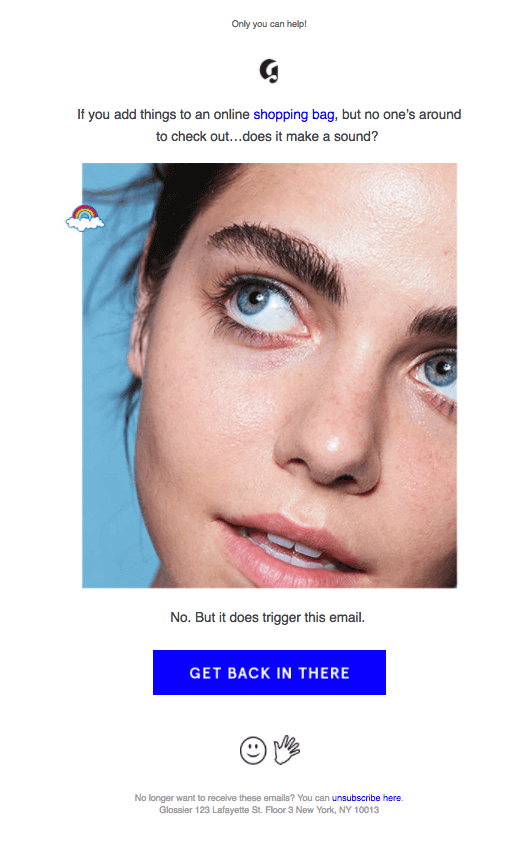Note: This is a guest blog post by Irina Linnik. The views and opinions expressed herein are those of the author.
Would you like to increase your revenue by 50% without spending too much money?

For any e-commerce entrepreneur (be they a brand that’s sells online or an affiliate marketer), the issue of attracting and retaining customers is vital. Customers bring revenue to the store and one has to try hard to convince them to spend at exactly this particular store.
Fortunately, e-commerce marketers have an array of tools at their disposal and email marketing remains one of the most powerful among them all.
The abandoned cart emails, for example, can indeed increase the revenue up to 50% and usually count for 15% of recovered revenue — and that’s just one type of email that you can use to promote your store. When married with affiliate marketing, email marketing can be a game-changer.
However, things are not that simple either. E-commerce email marketing has its own tricks and peculiarities that need to be considered in order to create a powerful and well-converting affiliate (or other) campaign.
Getting People to Share the Email
First things first — you need to collect the emails of your customers before building any e-commerce marketing campaign.
There are a few ways to do so:
- a pop-up with a sign-up request and a discount/incentive offered;
- a request for site registration;
- a guest checkout with a request for an email;
All these elements may come in different forms: i.e. pop-ups can take either a whole landing page or appear only if the user intends to leave.

An important thing to remember is to always offer value to the user in exchange for the email. If the user is new to your site, a good idea would be to offer a discount on the first purchase if the user shares the email. And if the user is returning, you can make the message more personalized (“Glad to see you back!”) and again offer something valuable if they have not shared the email yet.
Now that you got a nice list of your customers’ emails and segmented the audience correspondingly, let’s have a closer look at the email marketing for e-commerce brands and affiliates. In what follows, let’s delve into its main components.
Email Marketing for E-Commerce: the Essentials
Email marketing can be used to promote a product (or service), share the company’s message, and engage the customers with the brand (or an affiliate marketer).
For e-commerce, email is the ultimate method of timely and fully informing the users about the products and any special events. While social media is awesome, it’s more of a temporary thing while emails can stay in your box forever, waiting for you to come back to them.
Email marketing helps e-commerce stores to solve the most burning and critical issues:
- abandoned cart rate,
- a decrease in traffic volume,
- sales drop.
For each of your goal, a different email type successfully serves its objective.
1. Abandoned Cart Email
Abandoned cart rate is the pain point of any e-commerce entrepreneur. In 2017, the average abandoned cart rate was almost 79% and in recent years the number seemed to drop down to nearly 70%.
Abandoned cart rate is calculated by dividing the number of completed purchases on the number of carts created. The rate indicates how many users leave their carts — meaning, how many purchases you are potentially losing.
Abandoned cart email is a great way to recover the otherwise lost conversions and get the users to come back to the store.

Such an email is usually sent to the user after they added an item to the cart but left the store without buying. The main point of the email is to revoke the interest in buying, so the abandoned cart email usually has the following elements:
- clear and engaging call to action or CTA (“Come back, we really miss you”);
- a sense of urgency (“The item is still in stock but selling out fast”);
- the clickable button that leads directly to the cart;
- image of an item that was left in the cart;
- an incentive (not necessarily).
At a glance, this is what you should remember about the abandoned cart emails.
Great for: recovering abandoned purchases.
Frequency: 1-2 times after the cart abandonment.
Do: include information about the left item (try focusing on one item only, even if there are 10 of them in the cart). Add a CTA and make the message personalized and engaging.
Don’t: try to upsell, cross-sell, ask for a social media follow-up, etc. Abandoned cart emails are not used for promotion and awareness — they are used to get the users back on site.
2. Transactional Emails
All of us have opened emails that started with something like: “Thanks for joining us! Here is your 15% coupon on the first purchase!”
Transactional emails follow any action that the user completed on the site: a sign-up for a newsletter, the first visit, password reset. The main difference between the transactional and marketing emails is that transactional emails are strictly individual and are triggered by a specific action. Marketing emails, in their turn, are usually sent in a bulk and have a promotional nature.
While most affiliate marketers would not be able to leverage the benefits of the aforementioned cart abandonment email, both transactional and (below-described) promotional emails can be a powerful addition to an affiliate’s marketing arsenal.
Though it may seem that you can’t sell much with a password-reset email, transactional emails are one of the most profitable email types. These emails have 8 times more opens than usual marketing emails and they generate higher revenue.
Seems a bit weird, isn’t it? But everything is simple: the user knows what they are going to see in a transactional email and this is the reason they open it so often.
So how can one sell more using transactional emails? There are a couple of tips.
If you are sending a welcome email to a new customer, it’s a perfect time to include an incentive or bonus to encourage shopping at your store. You can add urgency here and state that the offer is limited until a certain date.
Post-purchase emails, like order confirmation, are great for upselling and cross-selling. Upon giving the information about the order and its status, you can suggest adding relevant items to the cart before the order is shipped.

You can add a bonus or a discount in case of a customer feedback email as well. Whether the feedback is positive or negative, you either reward a user with a gift or apologize for the negative experience.
Great for: up-selling and cross-selling.
Frequency: depending on the customer’s actions.
Do: keep the tone of the mail friendly and engaging and make the email personalized.
Don’t: include irrelevant information or push towards purchasing. Add information about your products only if it is relevant to the email content.
3. Promotional Emails
This is the most well-known type of emails that may include all sort of information:
- company news;
- updates on new products;
- information about the products;
- information about the sales and discounts;
- invitation to take part in a survey or similar activity.
The aim of the promotional email is to engage the user, get them back to the site, increase conversions, and raise awareness. An important thing to do before launching a promotional email campaign is to segment your customers in order to ensure the right content finds the right audience.
Great for: raising awareness, driving traffic, increasing sales, increasing loyalty.
Frequency: depends on your objectives.
Do: keep the email informative and engaging. Make sure the CTA is visible and has value.
Don’t: spam.
Tips for a Stellar Email Marketing Campaign
Despite the type of email that you will be using, there are some essential things to consider if you want customers to open your email and engage with it.
Subject Line
Depending on the subject line, 47% of the customers will open the email, while 69% are ready to report the email as spam all due to a poor subject line.
A perfect subject line should describe the content of the email and grab the user’s attention immediately. Seems simple but is quite challenging to master. However, there are some effective tips that help digital marketers achieve their end goal aka the email opening:
- 4-second rule: your subject line has to be read within 4 seconds or the user loses interest.
- Stay away from clichés: words like “remind” are used by so many marketers that your message will simply get lost.
- Be creative: start with an unexpected question – such subject lines work great.
- Perform tests to see which line works the best.
Design
Since we are focusing on e-commerce, the rule “less is more” applies.
You have to walk the line when designing an e-commerce email. If it contains only text with almost no visual elements, users will most probably send it to spam or ignore. But if the email contains too much graphics and images, the email algorithms will send it to the “Promotions” folder or similar.
So make it recognizable by including the brand logo and corresponding imagery but don’t overdo it and put the content (message) on the first place.
Mobile-friendly
There is no need to remind about the importance of mobile. After all, 79% of the users made a purchase from their mobile devices within the last half a year.
So it’s vital that your email looks equally good both on the desktop and mobile. Keep an eye on the visual elements, CTA buttons, font size, and style. And always send a test email to your own account to check whether everything is fine.
Final Word
Building effective email marketing campaigns for e-commerce is quite a complex process that involves many steps and aspects. Here is a quick checklist to help you better plan your strategy:
- Set clear objectives: raise conversions, increase awareness, boost sales, etc.
- Identify the target audience;
- Do research on the target audience to come up with the best timing options;
- Craft engaging copy and add corresponding images;
- Double-check the CTAs;
- Do tests to see what email works the best;
- Set up analytics to track the email performance during and after the campaign.
What’s awesome about e-commerce is the number of available email services that offer extended functionality and serve as full-fledged digital marketing platforms. While some of these services are ready to be connected with the biggest e-commerce platforms like Magento, Shopify, or BigCommerce, others may require you to hire developers for the custom work. So first, see which email marketing service will be the best option for your store and goals and then either purchase an extension at the marketplace or contact a development agency for smooth integration between the platform and the service.
Whether you are an e-commerce brand or an affiliate marketer, do leverage email in your marketing!
If you have comments to add to what was discussed here, do chime in with them using the “Comments” area below.